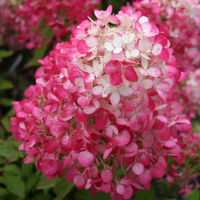How to take hydrangea cuttings and boost the value of your home (for free!)
One of the easiest (and cheapest) ways to boost the value of your home, here's how to take hydrangea cuttings
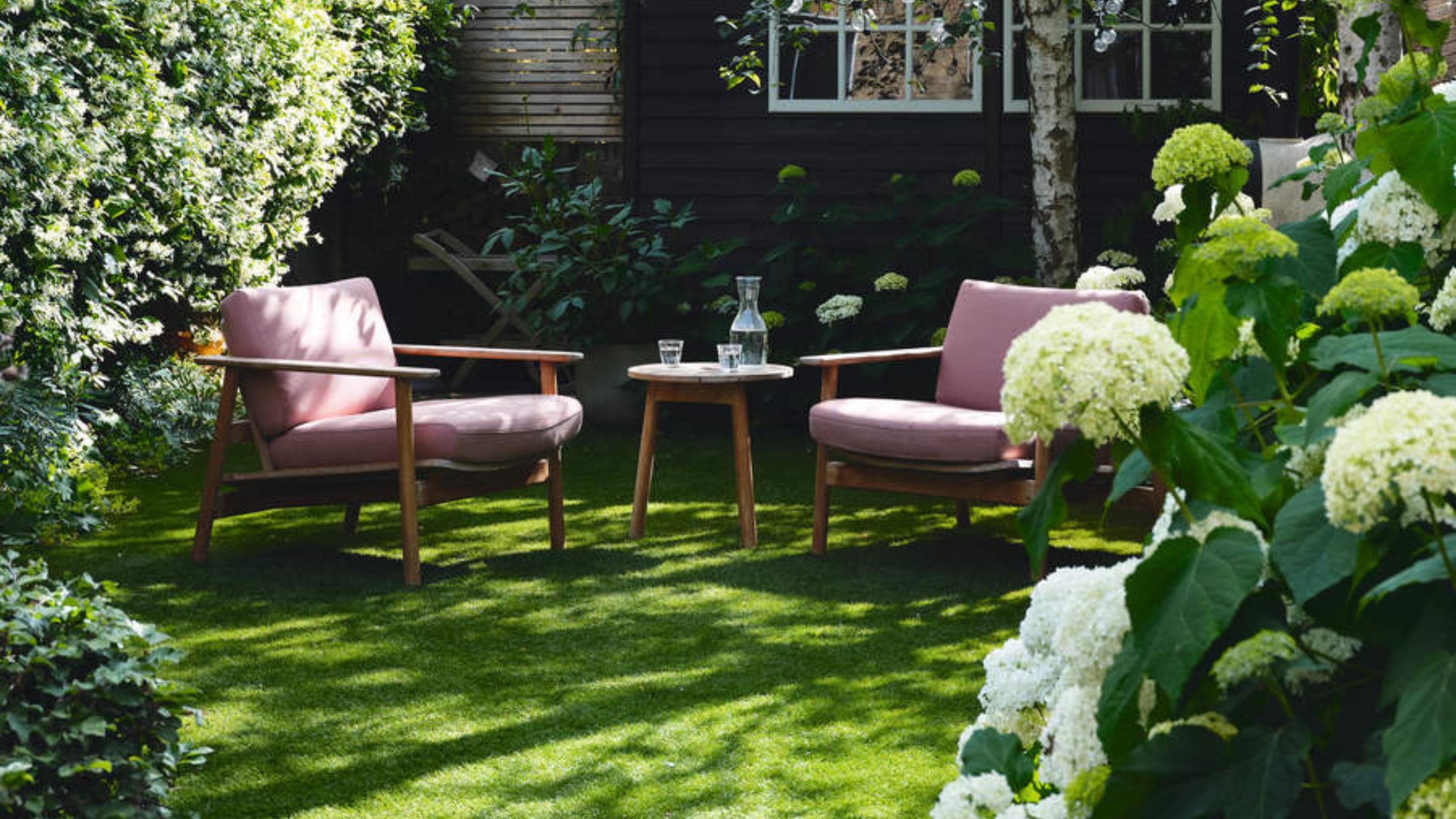

Is there anything more striking, more beautiful, more quintessentially British than a garden filled with blooming hydrangeas? Answer: absolutely not. And, now that we know these flowers can increase our property value, it's little wonder that so many of us are learning how to take hydrangea cuttings.
That's right, everyone: it's time to add hydrangeas to your list of must-try garden ideas, as a report by OnBuy's Garden Furniture sector has found that a whopping 78% of people are more inclined to view a house if its front garden is filled with these bold blooms.
Diamant Rouge | £18.74 at Crocus
From white to pink to raspberry red, the ever-changing colours on this hydrangea will make it a gorgeously dramatic addition to any garden.
While these ever-changing blooms might seem like high maintenance, they are incredibly easy to grow (with the right amount of TLC, of course). They're brilliant at keeping weeds at bay, too, which makes them one of the most useful garden trends around.

And best of all? Why, you can grow them from cuttings – which means you can increase your property value without spending a penny.
How to take hydrangea cuttings
If you are looking to add some serious oomph to a garden border, now is the time to start propagating hydrangeas from cuttings.
'If you have a favourite hydrangea plant, then it’s worth knowing that they are very easy to propagate from cuttings, and now is the perfect time of year to do it,' says Morris Hankinson, founder and managing director at Hopes Grove Nurseries.
'The easiest way to propagate these hardy shrubs is with softwood cuttings, and the shoots are soft until around mid-July.'

Morris Hankinson is the founder and managing director of Hopes Grove Nurseries Ltd, the UK’s only specialist grower-retailer of hedging plants. He established the thriving business in 1992, shortly after graduating with a Commercial Horticulture Degree from Writtle College, Essex.
Tempted to try it for yourself? Of course you are!
Here’s what you need to know.
What you will need
When it comes to taking hydrangea cuttings, it's best to make like The Lion King's Scar and (wait for it) be prepared.
'Softwood cuttings can dry out very quickly so it’s best to have everything to hand before you begin,' says Morris.
- A pair of sharp and clean secateurs, like this nifty pair from Amazon (alternatively, a knife will work in a pinch)
- A shallow container of water to stop the soft cuttings from drying out
- Rooting hormone (try Westland's Organic Rooting Powder, if you prefer to avoid all things synthetic)
- Pot(s) full of a good quality seed and cutting compost
- Clear plastic bags that are a suitable size to make plastic ‘greenhouse’ over your pots without squashing the young cuttings
- A pencil/pencil-sized stick or cane.
How to take hydrangea cuttings: a step-by-step guide
If you have had your eye on the big blousy flowers of one hydrangea plant in particular (ideally one from your own garden border, otherwise we urge you to please, please, please ask permission from whoever owns it: we do not condone guerrilla gardening methods), now is the time to ready your shears.
Why? Because it's best to take hydrangea cuttings in the summer, of course!
'Hydrangeas go dormant in the winter,' explains Christopher O'Donoghue, co-director at Gardens Revived. 'With that in mind, it’s best to propagate them and give them some time to develop roots before they begin their hibernation.'

A gardener with over a decade of experience under his belt, Christopher set up Gardens Revived with his brother, Andrew, in 2018 to create a thriving family business. Together, they have worked on residential gardens, listed buildings and gardens, flower shows and large estates with some exceeding 70 acres – many with historical significance.
'The easiest way to propagate these hardy shrubs is with softwood cuttings, and the shoots are soft until around mid-July,' adds Morris.
1. Make this an early morning activity

Everyone's heard the phrase 'the early bird catches the worm', but it seems morning people are also more likely to get the best hydrangea cuttings, too.
'Early morning is the best time to take your cuttings,' says Morris. 'In summer, plants will have replenished their water supply over night so that the young stems are firm and turgid in the morning.
'Cuttings like this will be more successful than floppy, dehydrated ones taken later during a hot day.'
With this in mind, then, it's best to make like Christopher and set up a space in the shade to take your cuttings – and work quickly, too.
2. Find the perfect stem
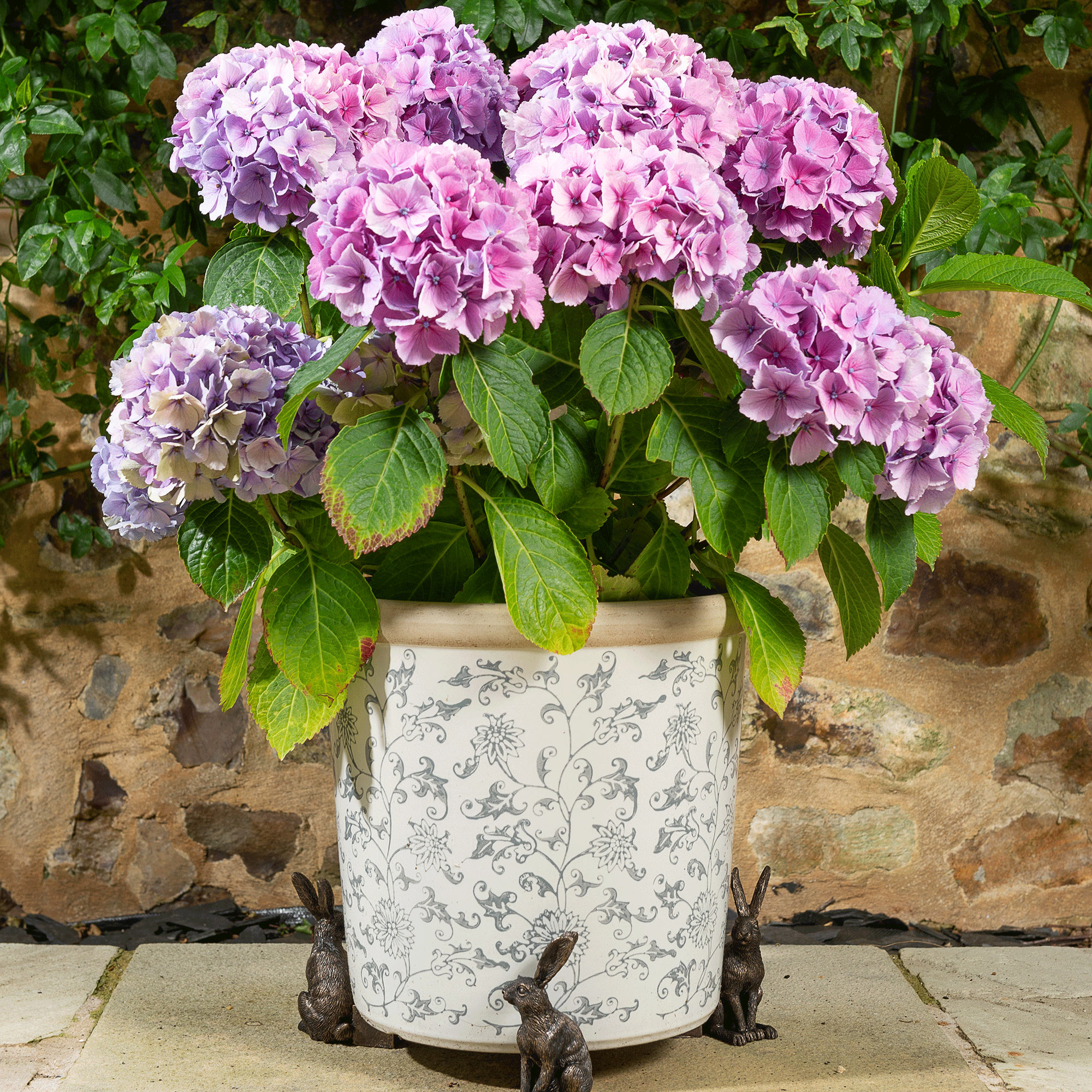
Hydrangeas might be famed for their handsome blooms, but you actually need to avoid selecting a stem with flowers on it if you are taking cuttings.
'Choose a stem that has no flower buds and cut them 10-15cm long,' says Morris, advising that you need to 'make your cut just below a pair of leaves'.
This area of the stem around the leaf nodes has a naturally higher concentration of plant hormones, which will make the cuttings easier to root.
'Sometimes you can make several cuttings from longer stems,' he adds.
Be sure to avoid any stems that show signs of aphids of fungal diseases, too. 'You want to pick the healthiest stems possible, for the highest chance of your cuttings taking root,' says Christopher.
3. Get trimming (and dipping!)
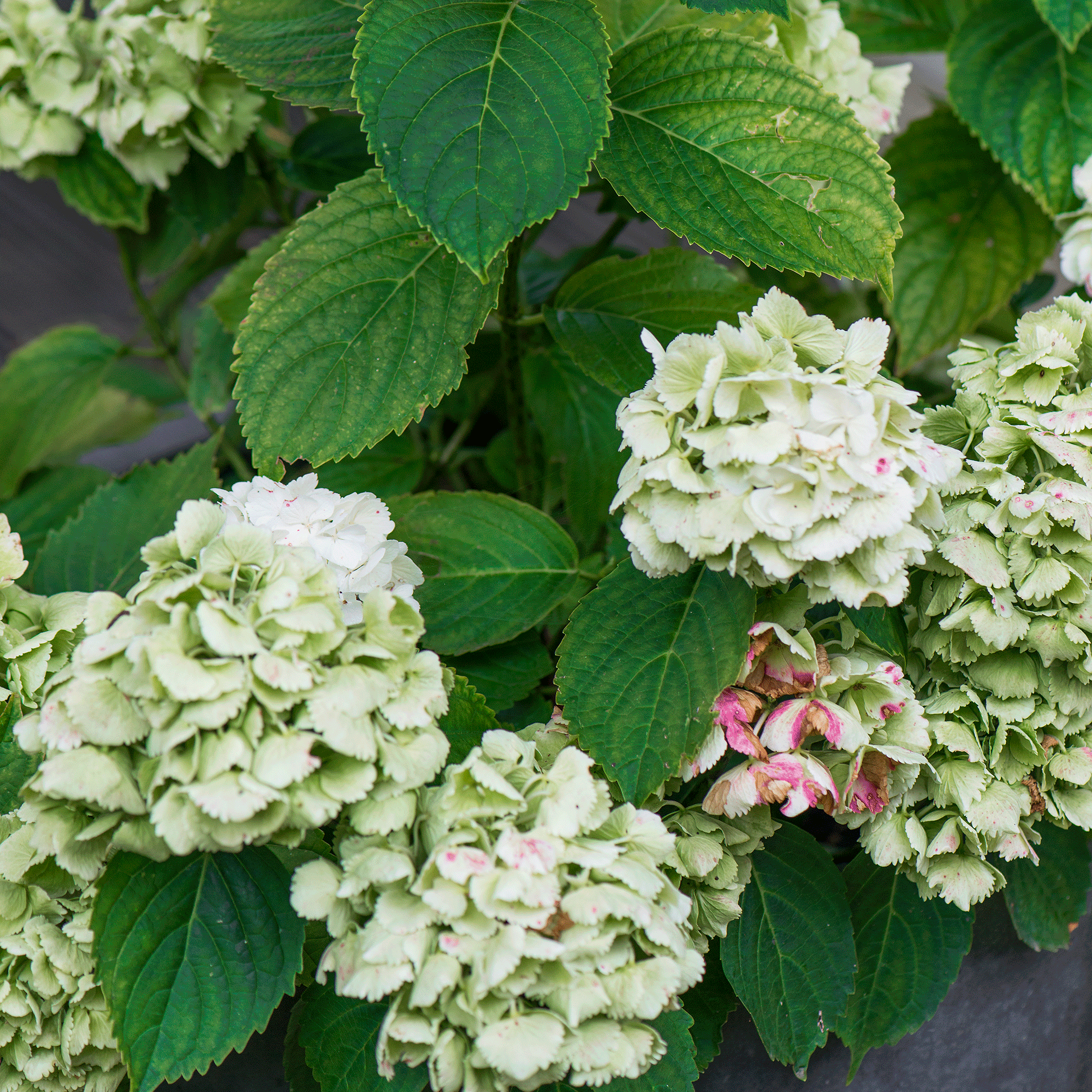
It's early, your workspace is cool and shady, your secateurs are almost frighteningly sharp, and your hydrangea looks healthy. All that's left to do now is start trimming.
'Trim off all except the top pair of leaves so that the cuttings are less prone to losing water,' says Morris.
'If the leaves are particularly big, you can cut them in half,' adds Christopher, noting that doing so will reduce water loss and the stress endured by the rooting process.
Be sure to dip the base of your cuttings in rooting hormone (following the directions on the container, of course) as you go.
4. Plant your cuttings
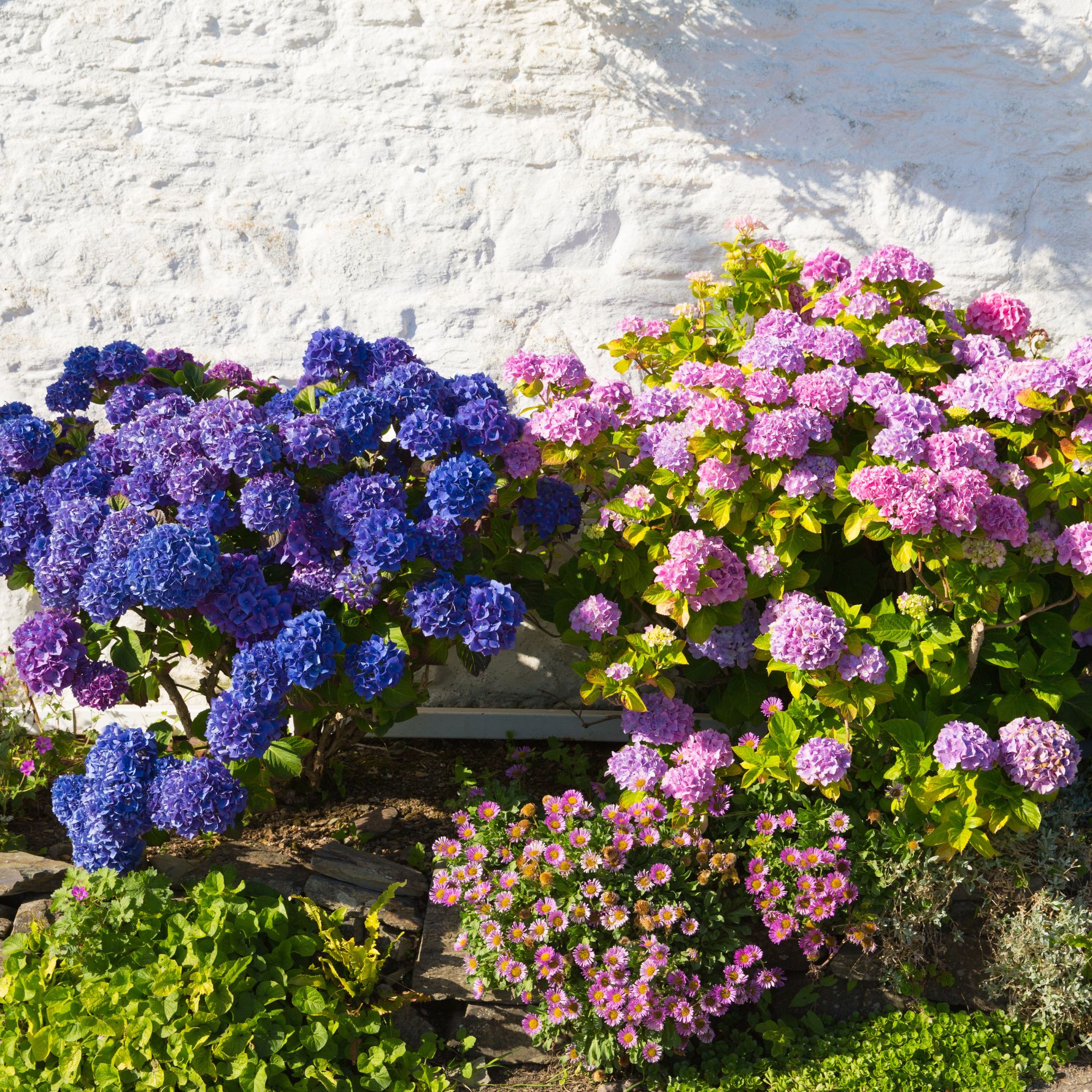
Remember the pots you filled with compost before we began this process? Excellent, because it's time to put those to good use.
'Make holes for your cuttings with the pencil,' says Morris, 'as this allows the cuttings to be inserted into the compost without dislodging all the rooting hormone. Insert the cuttings 5-8cm deep (about half their depth).'
Firm your cuttings well, and water them right away. Just be sure to 'let the compost drain for a couple of minutes,' says Christopher.
'You want to give them a deep water to encourage root growth,' he adds.
5. Create a greenhouse effect

To give your hydrangeas the environment they need to not just survive, but thrive, you'll want to create a mini greenhouse.
'It's really easy to do this,' says Christopher. 'All you have to do is cover the container with clingfilm to create a humid environment, and it will aid in germination.'
Fair warning, though: the 'bag shouldn’t touch the cuttings, so you may need some small supports inside to hold it,' cautions Morris.
Plastic bags in situ, pop your cuttings somewhere warm and shady and out of direct sun, and be prepared to mist them every once in a while if they start looking dry.
6. Play the waiting game
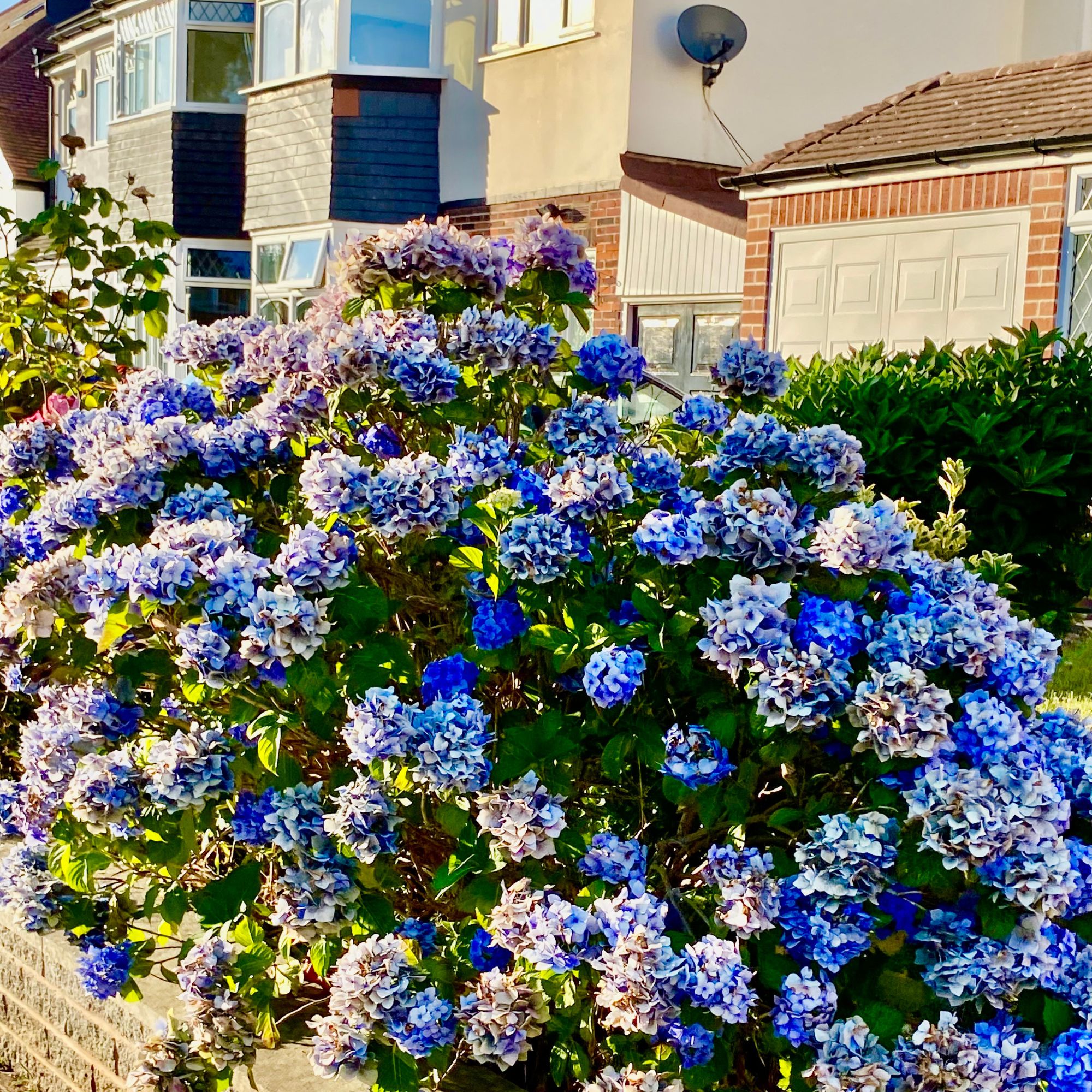
It will take around 3-4 weeks for your cuttings to take root, so just be patient.
You will know they are ready when they 'have roots emerging – you can test by giving them a gently tug and detect any resistance,' says Morris.
Don't disturb them for another week or so, to give them plenty of time to establish themselves. 'You will want to re-pot them into a bigger container out of direct sunlight,' says Christopher.
'Keep them well watered, because hydrangeas love moist soil – but be sure not to wind up with an overwatered plant, as they're always harder to rescue than a very thirsty one!'
7. Live your best hydrangea life
These colourful plants are absolutely gorgeous, so make sure you pop them somewhere you can admire them as they grow and take hold.
'They can be gradually introduced to a sunnier position,' says Morris, 'and they may well grow quite quickly so pinch out the shoot tips now and again to keep them strong and bushy.'
'Once they get to about 20cm tall you can plant them into the garden,' he adds.
Alternatively, you can adopt one of our favourite Scandi gardening trends and keep your hydrangeas in large containers. 'You'll need a big pot with plenty of drainage holes,' says Christopher, 'and you may need to move the pot in the summer, to ensure your new favourite flower doesn't get dried out by the sweltering midday sun.'
Never have we ever been more inspired to get out in the garden, quite frankly. All hail the home value-boosting power of the hydrangea!
FAQs
When should you take hydrangea cuttings?
The best time to take hydrangea cuttings is in July/August, as it means your cuttings will be soft at the tip, yet still old enough to have a woody base (which is vital when it comes to preventing root rot). You should also aim to take your cuttings early in the morning, and work quickly in a shaded area, to avoid them drying out.
Can you root hydrangea cuttings in water?
If your algorithm is anything like ours, you'll likely have been inundated with videos of people propagating their hydrangea cuttings in water. While this method does work, though, it can lead to a weaker root system – which means it's best to stick to the tried-and-tested soil method if you prefer a higher chance of success...
Get the Ideal Home Newsletter
Sign up to our newsletter for style and decor inspiration, house makeovers, project advice and more.

Kayleigh Dray became Ideal Home’s Acting Content Editor in the spring of 2023, and is very excited to get to work. She joins the team after a decade-long career working as a journalist and editor across a number of leading lifestyle brands, both in-house and as a freelancer.
-
 Will a conservatory add value to your home and how can you maximise it?
Will a conservatory add value to your home and how can you maximise it?This is what the pros say
By Amy Reeves
-
 I’ve been looking for a new signature scent for my home and The White Company's new fragrance is the exact summer holiday smell I needed
I’ve been looking for a new signature scent for my home and The White Company's new fragrance is the exact summer holiday smell I neededSantorini smells fresh, summery and sophisticated
By Kezia Reynolds
-
 How to remove algae from garden walls in five steps – and the cleaning product experts rave about for tackling it fast
How to remove algae from garden walls in five steps – and the cleaning product experts rave about for tackling it fastExperts share their top tips for getting garden walls algae-free
By Katie Sims
